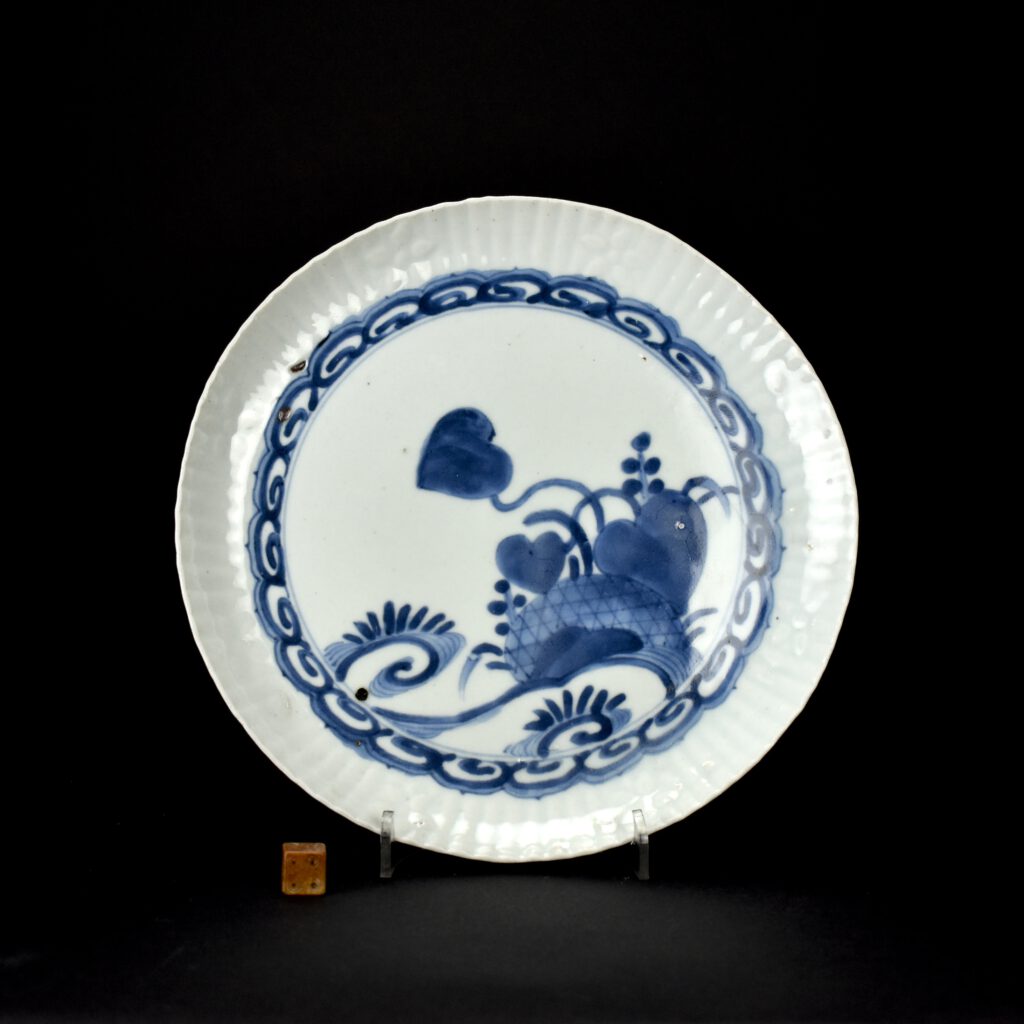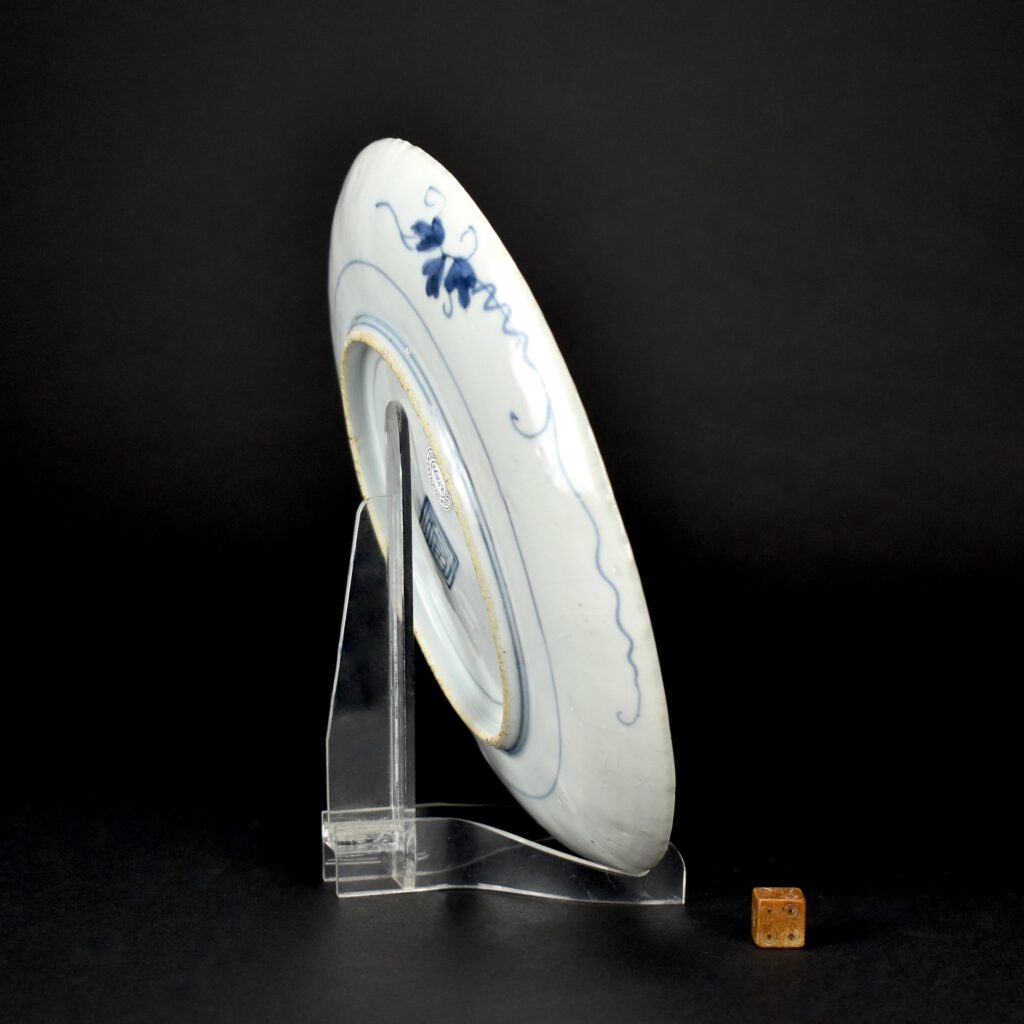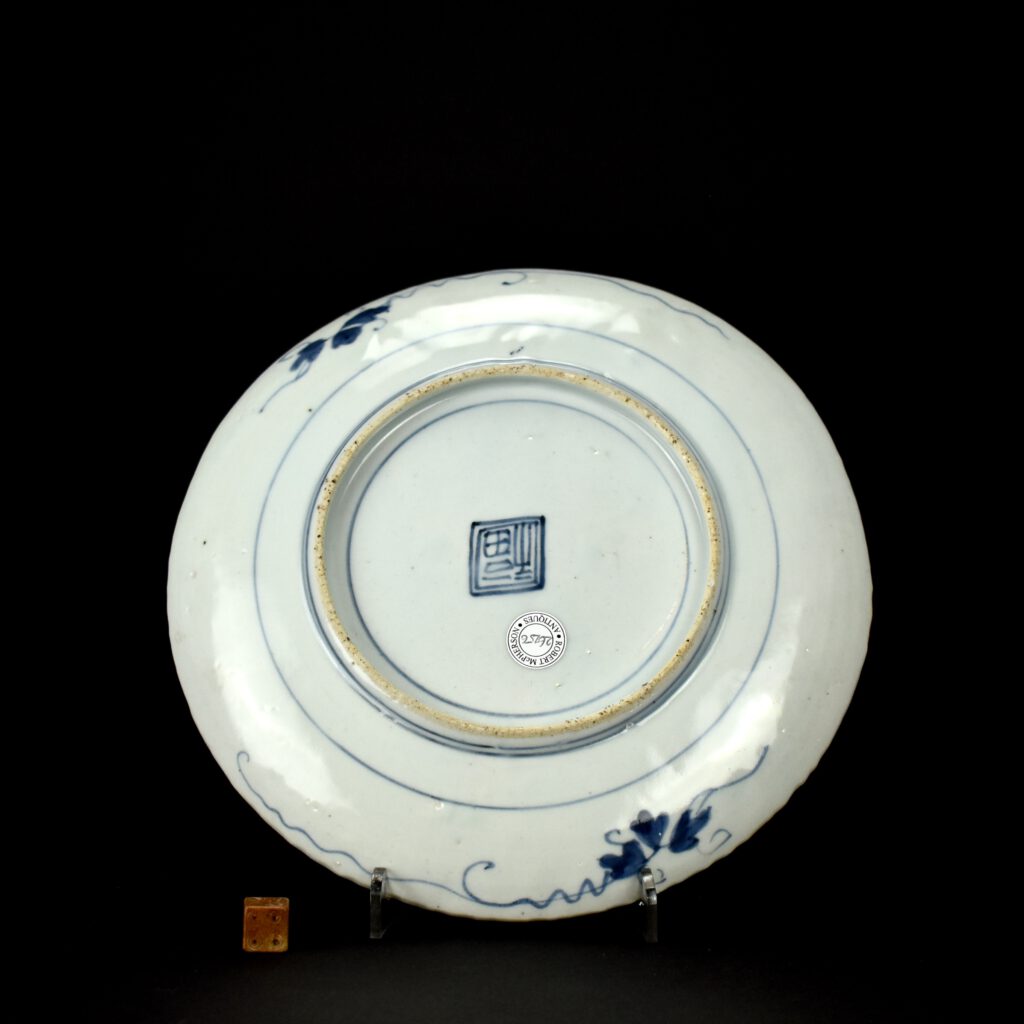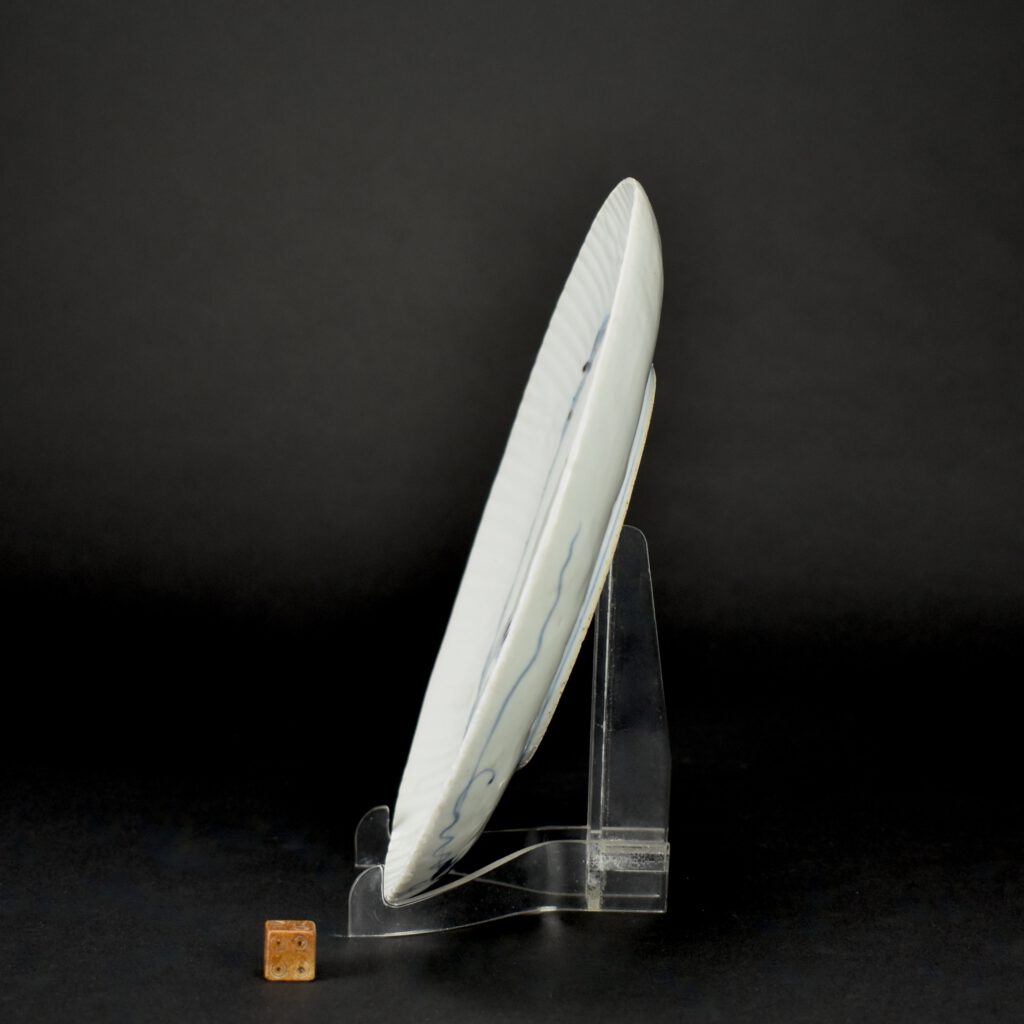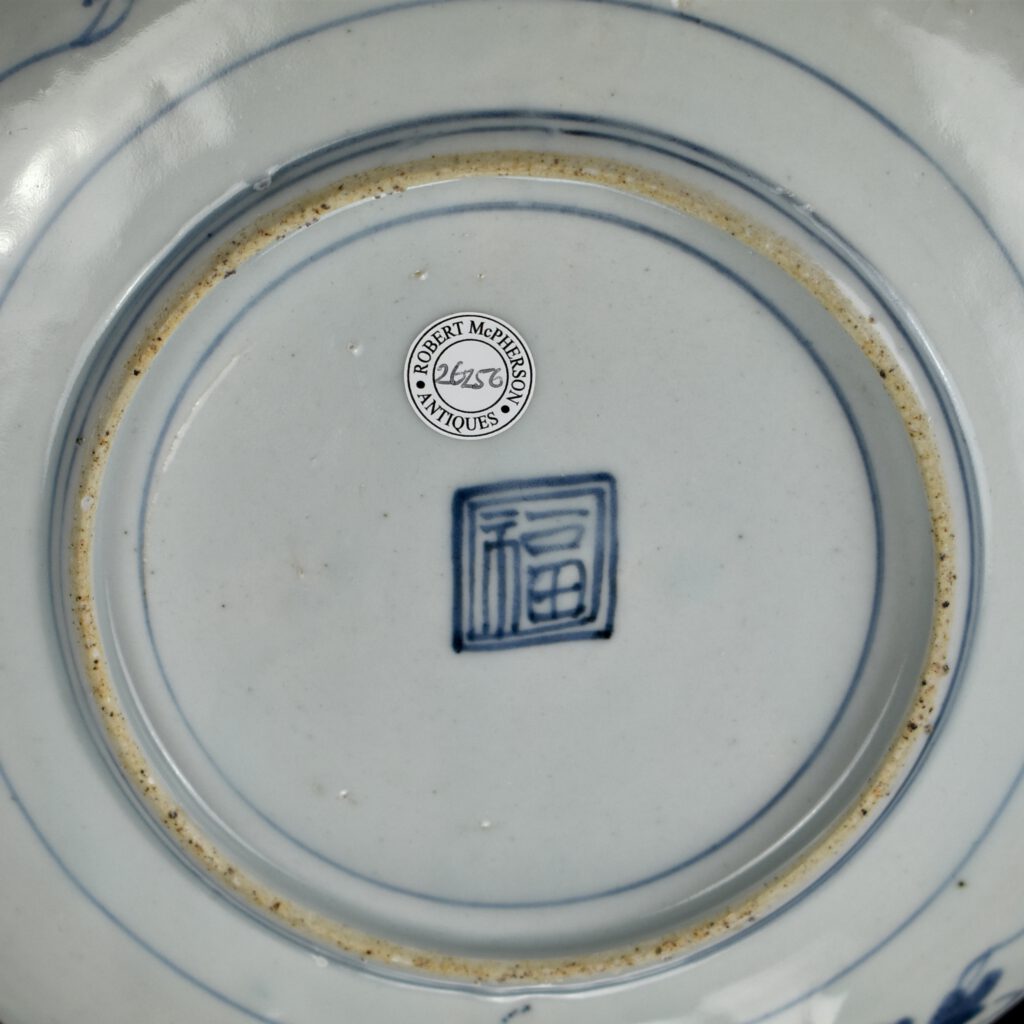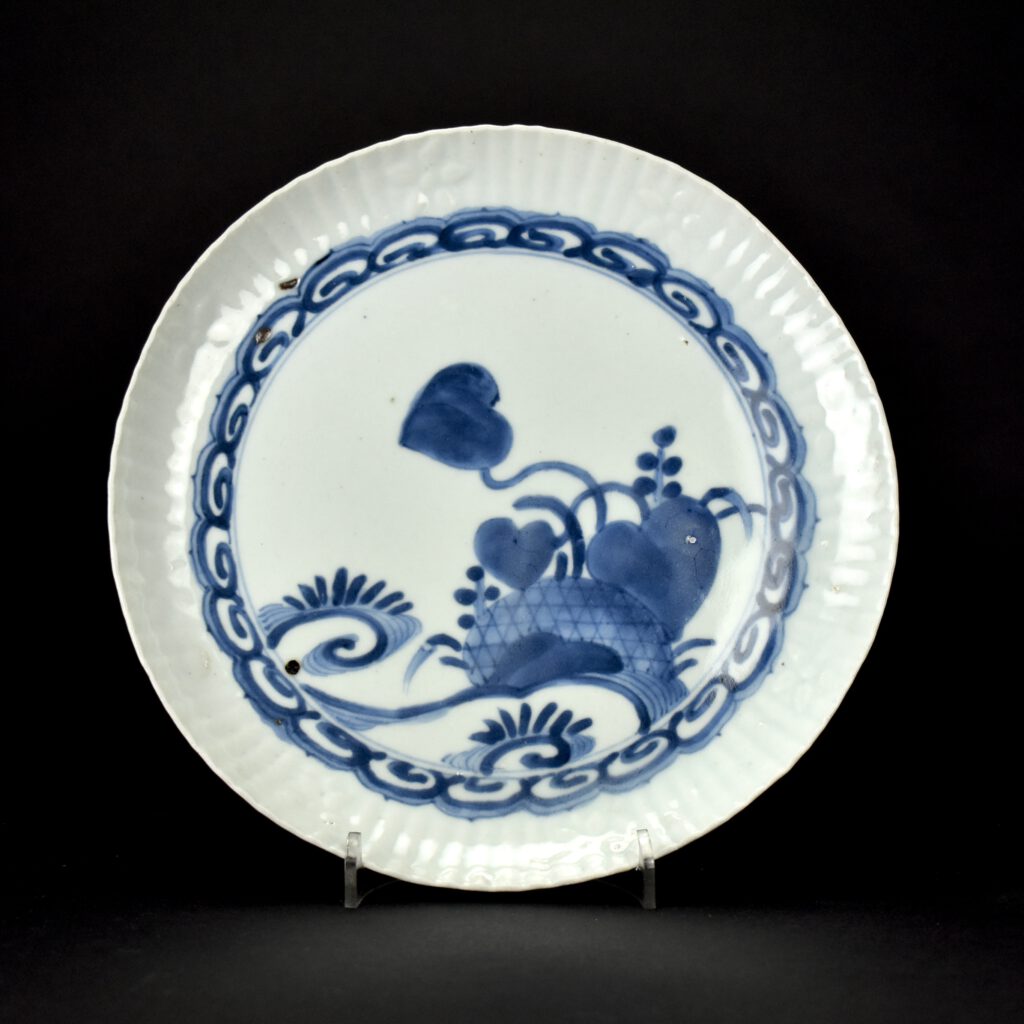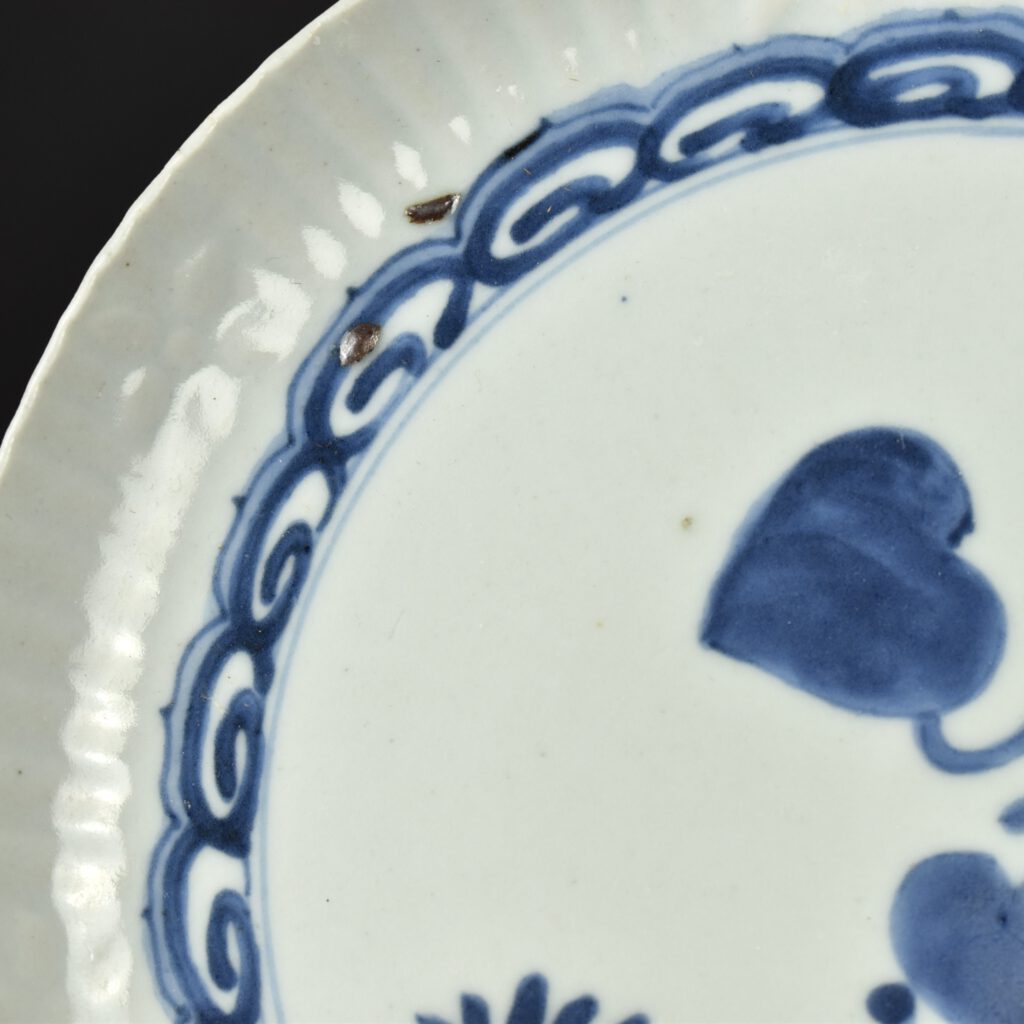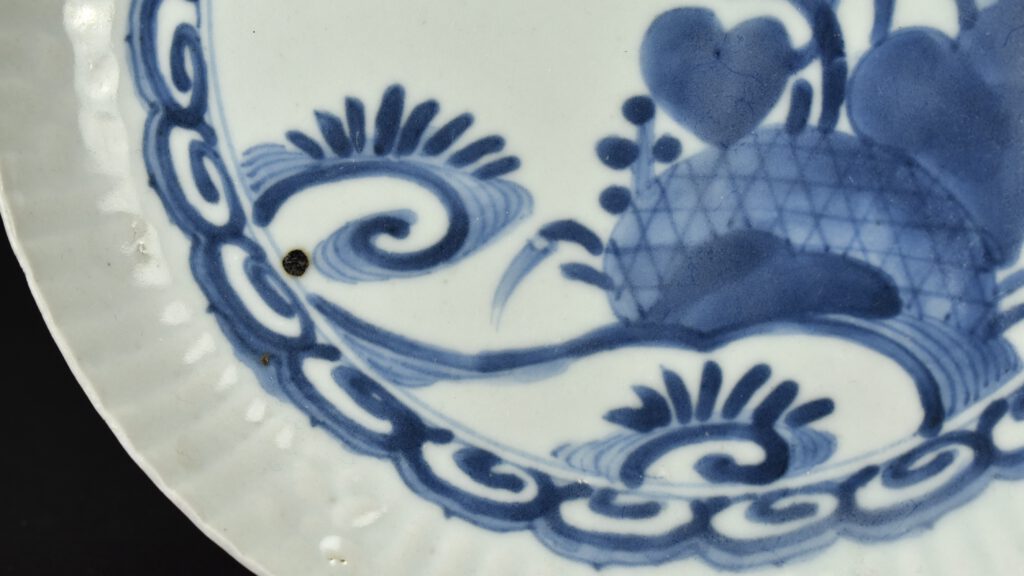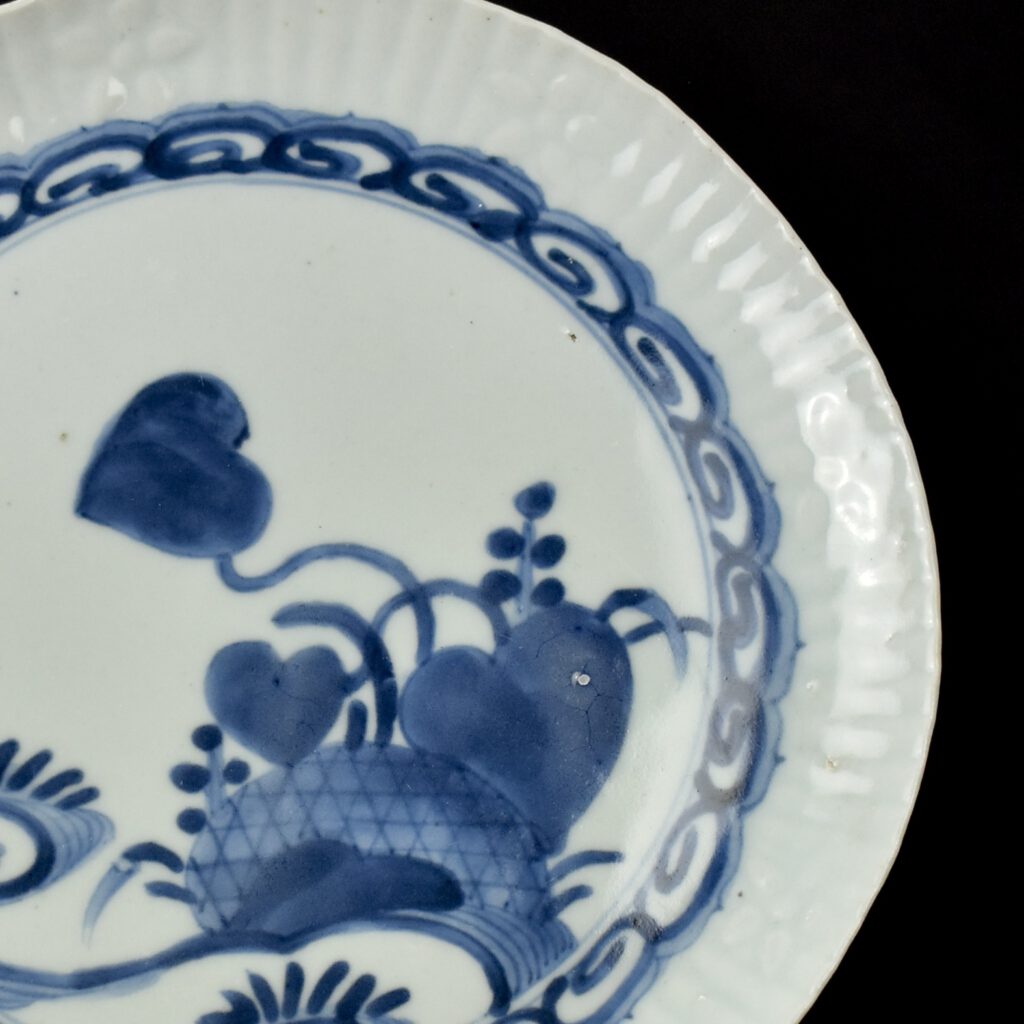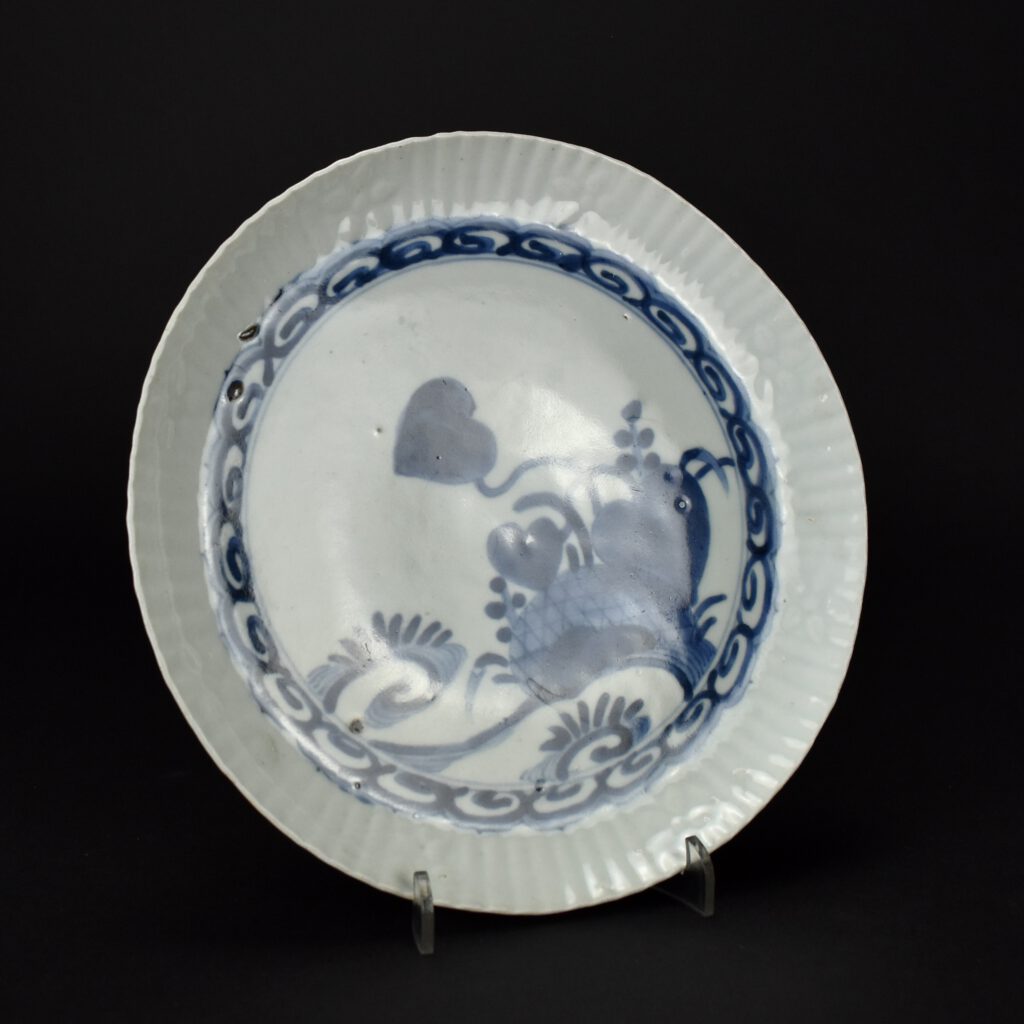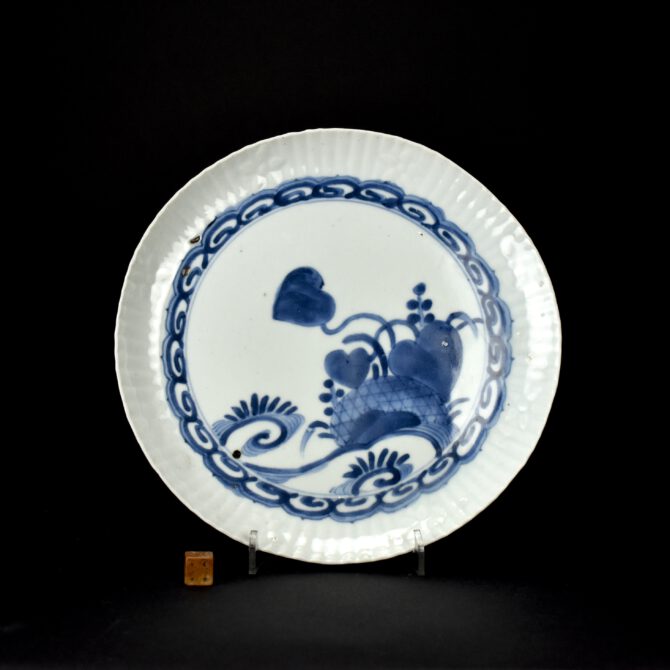
Japanese Mid-17th Century Porcelain Dish
An Early Japanese Blue and White Porcelain Dish, Arita Kilns c.1650 – 1660. This dish has a moulded edge of curved ridges with eight prunus flower heads evenly placed. The central design consists of flowering arrowhead Sagittaria sagittifolia (see below for more information) behind a bound boulder with stylised crashing waves. Boulders bound with rough ropes were a traditional defence for Japan’s fragile coastline. The base with a seal-mark and the sides with tendrils flowing from three leaves. This plate was made for the Japanese market, a dish of this design is in the Shibata Collection on display at Kyushu Ceramic Museum in Japan (see References).
SOLD
- Condition
- No damage, a bit warped, two small pieces of iron in the glaze at 11 O'clock. A small burst bubble on a arrowhead leaf.
- Size
- Diameter 24.4 cm (8 inches).
- Provenance
- N/A
- Stock number
- 26256
- References
- For an almost identical dish see : Complete Catalogue of Shibata Collection (Contributors Saga Kenritsu Kyūshū Tōji Bunkakan. Published by the Kyushu Ceramic Museum, 1990) page 55, plate 0382.
Information
Arrowhead Aquatic Plant Sagittaria sagittifolia
A herbaceous perennial which grows in water from about 10 to 50 centimetres in depth. The name comes from its triform leaf blade. The round tuber is edible, it has a bland taste and is rather starchy. In Japan, it is known as Kuwai and its tuber is eaten particularly during the New Year. In China, it is known as Cí gū and often used in winter hot pots.
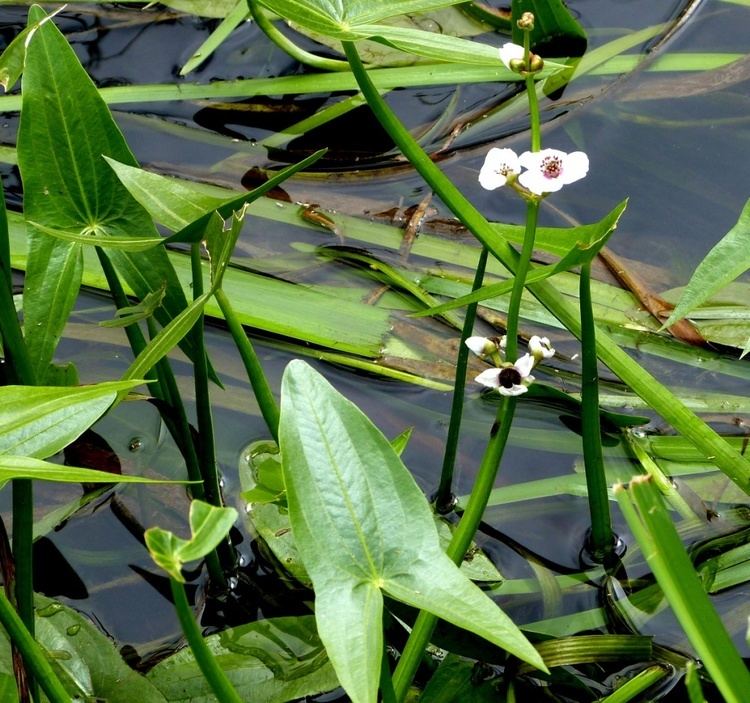
Omodaka kamon depicting stylised arrowhead

